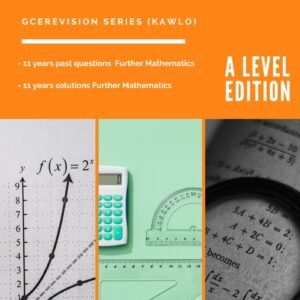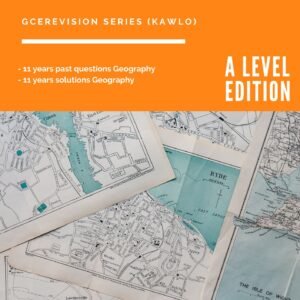Cameroon GCE A/L June 2016 Geology paper 2
Cameroon GCE A/L June 2016 Geology paper 2
GEOLOGY 2016:
Time: 3 hours
Code: 755
INSTRUCTIONS: answer four questions, one from each section. All question carries equal marks. You are reminded of the value of clear sketches, even when not specifically demanded by the wording of the question, and of the necessity for good English and orderly presentation in your answer.
SECTION A
- (a) Describe the morphology of the following fossils and relate them to their mode of life
- Mytilus and Venus; (6 marks)
- Ostrea and Pholas; (6 marks)
- Nautilus and Goniatites. (5 marks)
(b) why are Ammonoids very useful for correlation and dating of rocks? (8 marks)
(Total = 25 marks)
- (a) Make a labelled diagram to show the morphology of a Regular Echinoid in an aboral view (10 marks)
(b) Discuss the modifications that are seen in the test of Irregular Echinoids (15 marks)
(Total = 25 marks)
- (a) With the aid of diagrams, describe the different types of unconformities. (20 marks)
(b) How can unconformities be recognized on a map? (5 marks)
(Total = 25 marks)
SECTION B
- Discuss the various processes that would result in the formation of different types of igneous rock (25 marks)
- Discuss the characteristics of volcanic rocks and sedimentary rocks which are used to deduce their environments and conditions of formation (25 marks)
- (a) Differentiate between metamorphic zone and metamorphic grade (6 marks)
(b) Outline various metamorphic zones in region and thermally metamorphosed pelitic rock (12 marks)
(c) with the aid of a diagram, illustrate the tectonic setting of dynamothermal metamorphism, shear metamorphism and thermal metamorphism (7 marks)
(Total = 25 marks)
SECTION C
- (a) what do you understand by sorting? (3 marks)
(b) Name and describe arenaceous rocks which characterize the following environments:
(i) Arid; (8 marks)
(ii) Deep marine; (6 marks)
(iii) shallow marine. (8 marks)
(Total = 25 marks)
- (a) what are the main factors that control marine erosion? (10 marks)
(b) Discuss the different processes of marine erosion (7 marks)
(c) Describe and account for the formation of wave-cut platforms, arches and stacks. (8 marks)
(Total = 25 marks)
- (a) Outline the classification of joints based on their mode of formation (13 marks)
(b) What are the advantages and disadvantages of joints to a:
(i) Civil Engineer? (4 marks)
(ii) Hydrologist? (4 marks)
(iii) Geomorphologist? (4 marks)
(Total = 25 marks)
SECTION D
- (a) Define the following terms used in crystallography:
- Parameter; (3 marks)
- Miller indices; (3 marks)
- Crystallographic axes; (3 marks)
- Interfacial angle. (3 marks)
(b) Define the three elements of symmetry and explain their use in the classification of crystals into classes and systems (13 marks)
(Total = 25 marks)
- (a) what is meant by paleomagnetism? (3 marks)
(b) explain the value of palaeomagnetic studies to a geologist (5 marks)
(c) Discuss with aid of labelled diagrams, the significance of igneous, metamorphic and orogenic activities and the distribution of mineral deposits along subduction zones (17 marks)
(Total = 25 marks)
- (a) Outline the properties of P, S and L waves (9 marks)
(b) with the aid of a labelled diagram, explain the behavior of P, S and L waves when transmission through the earth. (7 marks)
(c) explain how the knowledge of earthquake waves has been used to determine the composition of the core (9 marks)
(Total = 25 marks)















Vanessa
May 25, 2019
Thank you so much
Fred
November 24, 2019
Greetings....thks for the great work so far. Pls can I have geology 2 2017 and paper 3 geology 2019
T- frank
November 25, 2019
ok will upload i a bit but paper 2 is online!
landry
May 22, 2020
Anser